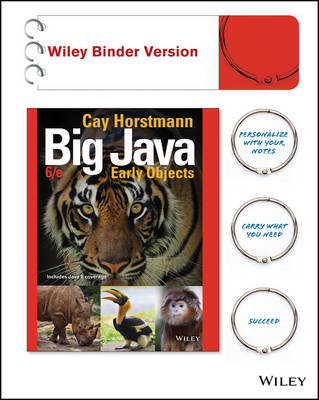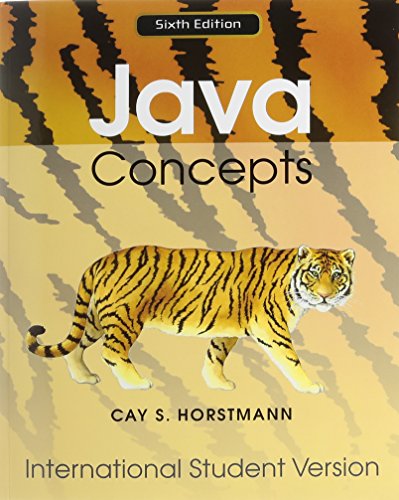Wiley Plus Products
35 total works
Cay Horstmann's sixth edition of Big Java, Early Objects provides an approachable introduction to fundamental programming techniques and design skills, helping students master basic concepts and become competent coders. Updates for the Java 8 software release and additional visual design elements make this student-friendly text even more engaging. The text is known for its realistic programming examples, great quantity and variety of homework assignments, and programming exercises that build student problem-solving abilities. This edition now includes problem solving sections, more example code online, and exercise from Science and Business. This text is an unbound, three hole punched version.
Java Concepts 6E for Java 7 and 8 International Student Version with WileyPLUS Set
by Cay S Horstmann
Here, the author shows how new in situ X-ray investigations and transmission electron microscope studies lead to novel explanations of high-temperature deformation and creep in pure metals, solid solutions and superalloys. This unique approach is the first to find unequivocal and quantitative expressions for the macroscopic deformation rate by means of three groups of parameters: substructural characteristics, physical material constants and external conditions.
Creep strength of the studied up-to-date single crystal superalloys is greatly increased over conventional polycrystalline superalloys.
From the contents:
- Macroscopic characteristics of strain at high temperatures
- Experimental equipment and technique of in situ X-ray investigations
- Experimental data and structural parameters in deformed metals
- Subboundaries as dislocation sources and obstacles
- The physical mechanism of creep and the quantitative structural model
- Simulation of the parameters evolution
- System of differential equations
- High-temperature deformation of industrial superalloys
- Single crystals of superalloys
- Effect of composition, orientation and temperature on properties
- Creep of some refractory metals
For materials scientists, solid state physicists, solid state chemists, researchers and practitioners from industry sectors including metallurgical, mechanical, chemical and structural engineers.
Java Concepts 5th Edition Java 5 and 6 for Uci and Wileyplus Set
by Cay S Horstmann
Java Concepts 5th Edition for Java 5 and 6 with Bluej Companion Manual and Wiley Plus Set
by Cay S Horstmann
Big Java 3rd Edition for Java 5 and 6 with Bluej Companion Manual and Wiley Plus Set
by Cay S Horstmann
Java Concepts 6th Edition Custom Unbound Edition with Wileyplus Set
by Cay S Horstmann
Java Concepts 7th Edition International Student Version with Wpsa Set
by Cay S Horstmann
Wiley Plus/WebCT Stand-alone to accompany Java Concepts 5th Edition for Java 5 and 6
by Cay S Horstmann
Big Java 4E for Java 5, 6 and 7 WileyPlus Standalone Registration Card
by Cay S Horstmann
WileyPLUS Stand-alone to accompany Big C++
by Cay S Horstmann and Timothy A. Budd
Java Concepts 6th Edition for Java 7 and 8 with Wileyplus Set
by Cay S Horstmann
Wiley Plus/Blackboard Stand-alone to accompany Java Concepts 5th Edition for Java 5 and 6
by Cay S Horstmann
Object Oriented Design and Patterns 2nd Edition with Wiley Plus Set
by Cay S Horstmann


